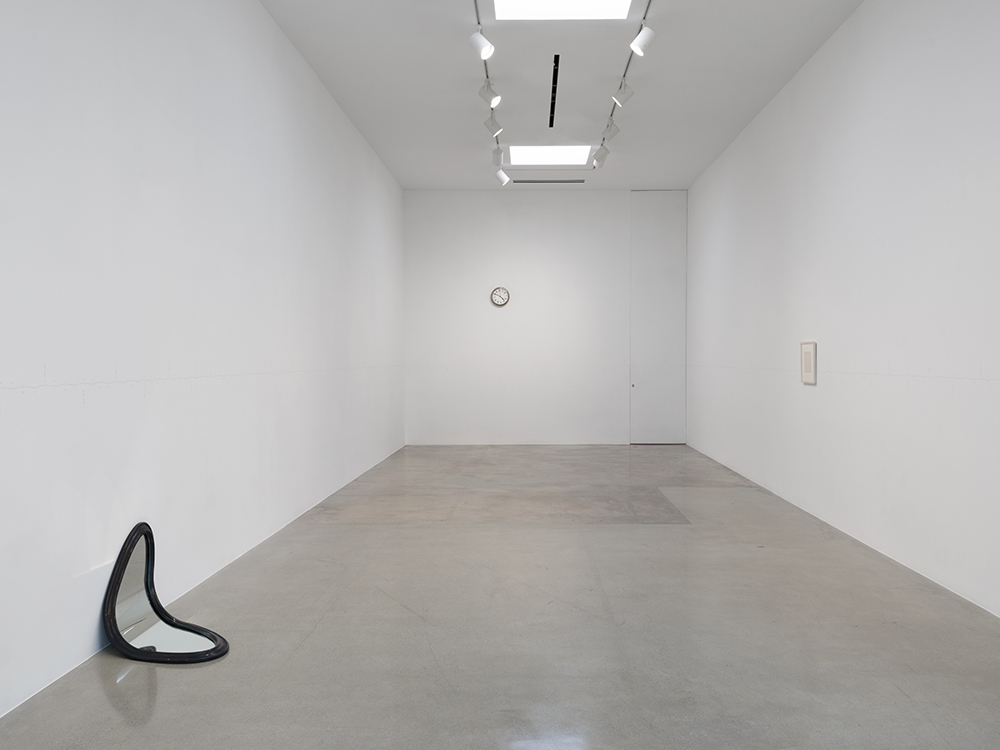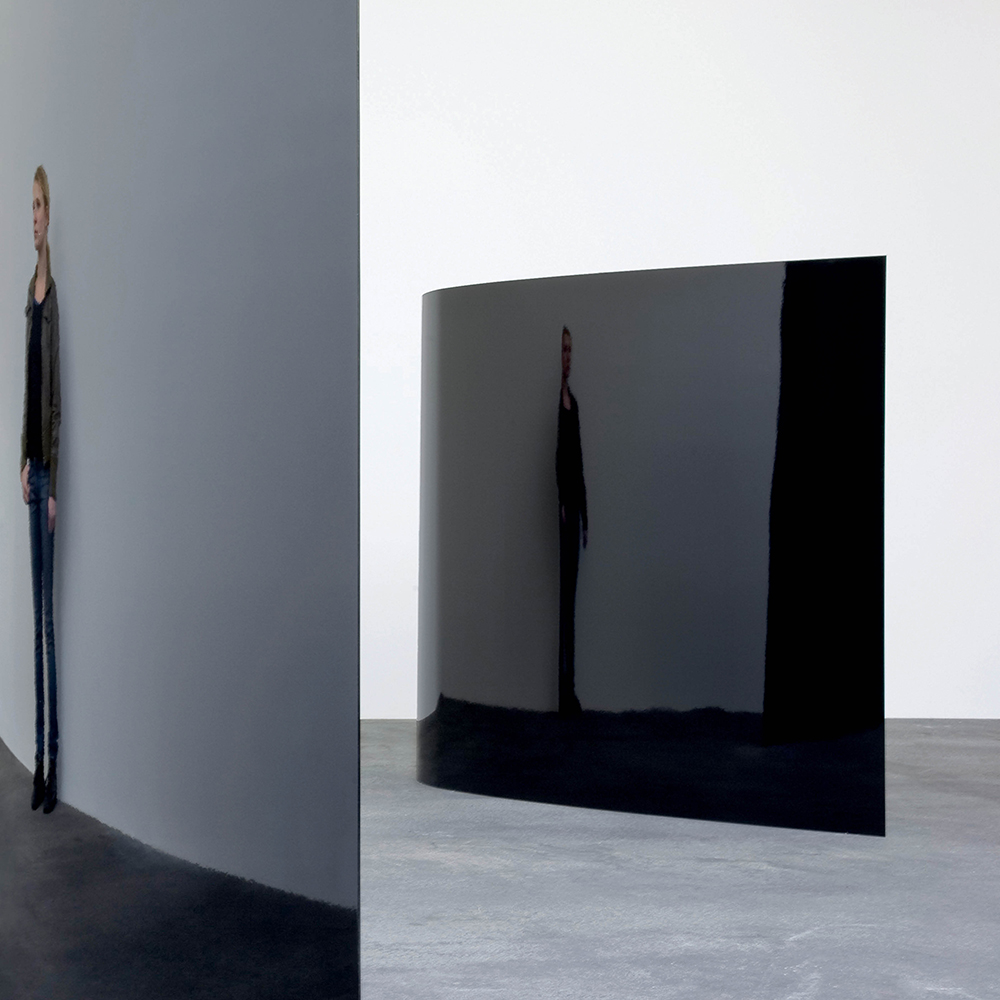The sprinklers of Pace Gallery’s immaculate lawn activated as I entered its courtyard for “Alicja Kwade & Agnes Martin: Space Between the Lines.” One of them was installed only a few inches from Kwade’s Jo’s Snow (Group 2) (2023), a forlorn patch of cast white marble in the shape of shoveled and half-melted snow, and water dribbled down the sculpture’s pocked side. Several iterations of Jo’s Snow were stationed in various states of paralyzed dissipation around Pace’s lawn. They languished in the sunlight, monuments to time’s inexorable passage, collecting dust and dried leaves. “My efforts to understand and represent something I can barely grasp, and my failure to do so, bring forth my work,” the Berlin-based artist has commented, a sense of stymied understanding that was palpable in the pieces on view here. The Canadian-born Martin, whose work is now inextricably entwined with the austere, parched landscape of the American Southwest, also made art that probed the edges of conscious understanding, although the lightness illuminating her meditative paintings and works on paper contrast sharply with Kwade’s ruminative installations. This two-person show explored how both artists embrace mundane ephemera–clocks and grids among them–to encounter the void.
The largest gallery featured Kwade’s enormous twin sculptures, Distorted Day and Distorted Dream (both 2024). In both works a curving, lacquered black plane of steel, reminiscent of Richard Serra’s COR-TEN steel installations, cleaves the air between rectangular metal frames; a large stone appears to float, meteor-like, on the supports before each arch. Warped mirror images elongate and then disappear along the sculpture’s inky curves. Kwade plays with suspension and immobilization to emphasize our perceptual limitations; the mirror rebuffs as much as it reflects.

“Alicja Kwade and Agnes Martin: Space Between the Lines.” Photo: Jeff McLane. 1201 S. La Brea Ave., Los Angeles, 90019. May 18 – June 29, 2024. Courtesy of Pace Gallery.
The sole black painting among Martin’s considerable oeuvre, The Sea (2003), which was painted a year before her death, hung on an opposite wall. Slender white lines gleam across the canvas at intermittent weights, creating a shimmering effect akin to light breaking over water. Before embarking on her artistic career, Martin had trained to become an Olympic swimmer, and something of that gliding, repetitive motion can be seen in her paintings, as does the sense of submersion and tranquility. The artist has talked about looking at a painting as entering “a field of vision as you would cross an empty beach to look at the ocean.” The Sea’s rhythmic intervals of negative space, with its lost and found lines, likewise refutes containment. Her meticulous grids express the transmutation of duration into eternity, opening outwards in waves. Both artists reckon with time as something essentially beyond human grasp, even as we are swept away by it with the passing of years.
The next room provided more entropy from Kwade—a clock ticking in the wrong direction, and a melted mirror sliding onto the floor—while Martin was represented by an untitled etching (dated 1960), whose inconstant lightness gives the impression of a weather event occurring inside its spare grid. 220 Days (2014/2024) by Kwade travels across all the walls in an undulating line of miniscule brass watch hands, marking the passing of time in six-hour intervals. At the right angle, they vanish from view entirely.


